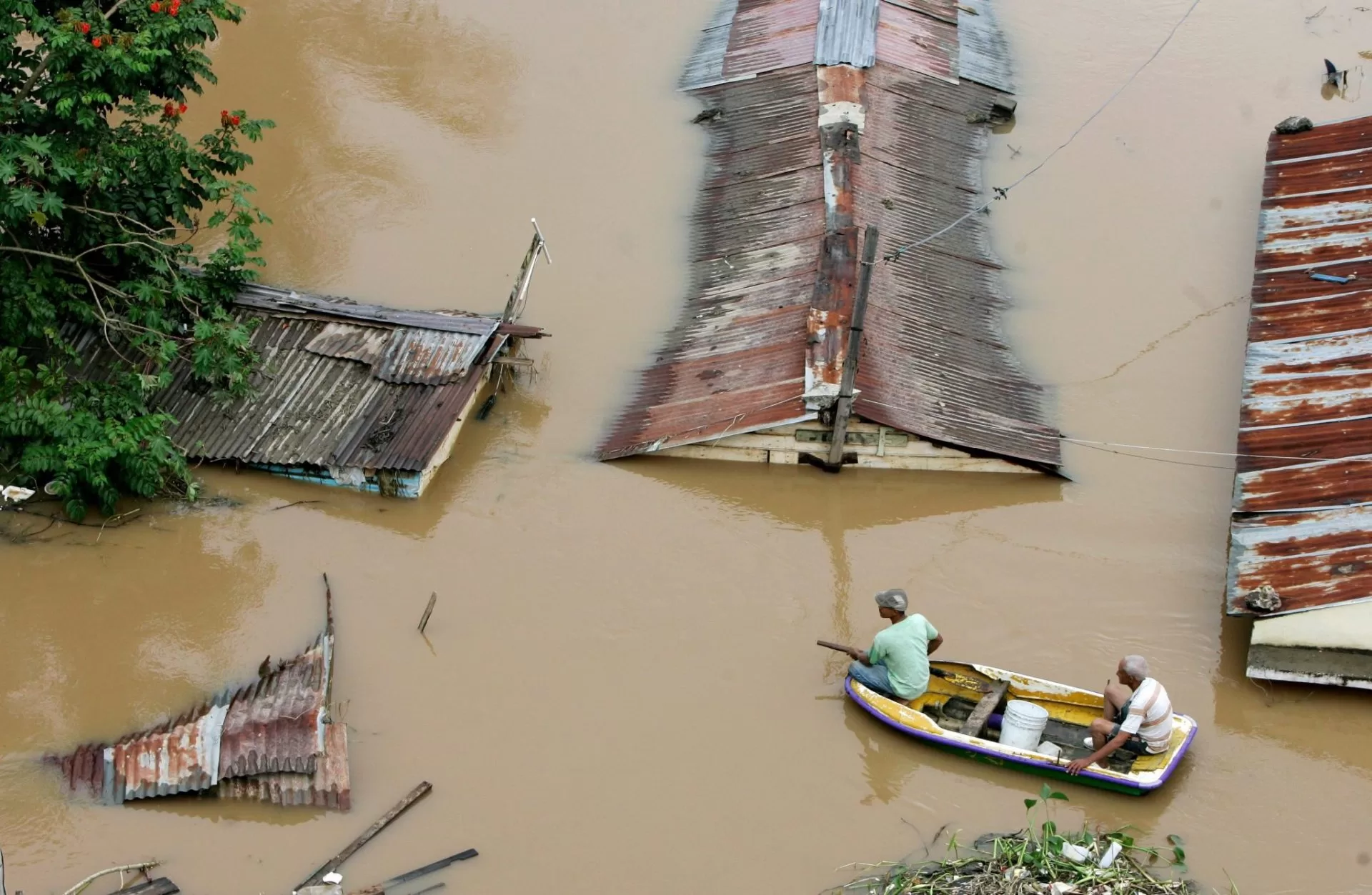
Santo Domingo, DR. – Franklin crosses the center of the country and refreshes the tragedies of storms Noel and Olga in October and December 2007, which claimed the lives of 150 people and left incalculable material losses for the poorest and most vulnerable population. Between both storms, more than 140,000 people were internally displaced and caused material losses estimated at US$437 million, according to the World Bank.
With tropical storm Franklin over the national territory, the Emergency Operations Center at mid-afternoon this Wednesday had issued a preliminary report on the day on the damage of the phenomenon, referring to 547 homes affected despite the multiple videos from different parts of the country showing the flooding of entire neighborhoods. Zero houses destroyed; 280 mobilized to safe areas; 312 refugee women; 2,760 roads affected; 6 isolated communities, does not report deaths.
Thinking about the preparations of yesterday Tuesday and today Wednesday of the relief agencies, it should be noted that according to Oxfan studies in the Dominican Republic, on average each year, 25 thousand people are displaced by disasters, the country occupying the fourth highest level of displacements caused by disasters in the Caribbean region.
Destruction caused by Tropical Storm Noel on October 28 and 30, 2007 Franklin crosses the center of the country and refreshes the memories of the tragedies of Noel and Olga and of the first one it is remembered that it affected a wide sector of the national territory, the provinces most hit being Duarte, Bahoruco, Barahona, Azua, San José de Ocoa, Monsignor Nouel, San Cristóbal and Peravia. A report from the National Emergency Commission on November 21 of that year revealed that the bodies of 87 people had been recovered and that 42 were missing. 34,172 people were displaced and 4,871 had to take shelter in schools, churches, and cultural centers. 26,491 people were housed in shelters.
Although prior to the arrival of the storms, many people go out to bathe in the downpours and in the media and social networks the long lines in shopping centers and supermarket gondolas are aired as a sign of economic success, the final reality is that those who are seriously affected are the poorest families. The intensity of the rains affected the entire country, showing a deviation above the normal rainfall for the month of October in all regions. The localities with the highest levels of rainfall that exceeded 300% of normal were San José de Ocoa, Padres las Casas, Azua, Oviedo, Cotuí and Moca. These intense rains led to the saturation of the water table to a greater overflow of the most important basins of the country causing flooding in all regions to a greater or lesser extent and evidenced the increasing incapacity of support and drainage of the main channels of the country.
The ECLAC report on the evolution of the impact of the storm Nouel in the Dominican Republic reveals that, in effect, 90% of the most affected population was the poorest and most socially vulnerable, living mainly on the banks of rivers and ravines that are easily flooded, resulting in being victims of being carried away by currents that carried people away and household goods and livelihoods. The World Bank, in its report Financial Management and Disaster Risk Insurance in the Dominican Republic of 2015, reveals that tropical storm Noel caused damages and losses for 1.2% of GDP and was characterized by its very broad reach, directly or indirectly affecting more than 70% of the population. Like ECLAC, the World Bank confirmed that, among the people directly affected, more than 90% were below the poverty line, which forced the Government to assume significant compensation costs. In 2007, RD$3 billion of immediate budget reassignments were decided (almost US$90 million or 1.1% of total government spending for that year).
Olga was a Franklin-like storm that devastated the Dominican Republic in December 2007.
Trajectory of Tropical Storm Olga that affected the country on December 11 and 12, 2007. The newspapers headlined “Dominican desolation” to refer to what was left behind by tropical storm Olga that affected the country between December 11 and 12, 2007 with 22 deaths, 35,000 displaced, 7,500 homes destroyed and 137 communities cut off from communication. The center of the sub-tropical storm Olga entered through Juanillo in Punta Cana with maximum winds of 75 kph and higher gusts that extended more than 400 kilometers to the north and northeast of its center moving at a speed of 15 kph in a west-northwest trajectory. The storm hit the Dominican Republic a month and a half after “Noel” caused the death of more than 100 people, the disappearance of another 46 whose bodies were never found, as well as the isolation and displacement of tens of thousands and the destruction of extensive plantations and disappearance of the means of production of families from the most vulnerable and poor sectors. Olga made landfall in the Dominican Republic at a time when that country was still recovering from the effects of Storm Noel that arrived in late October. The Economic Commission for Latin America (CEPAL) estimated in 2008 that during tropical storm Olga 170% of the normal amount of rain fell, which was attributed to climate change.

